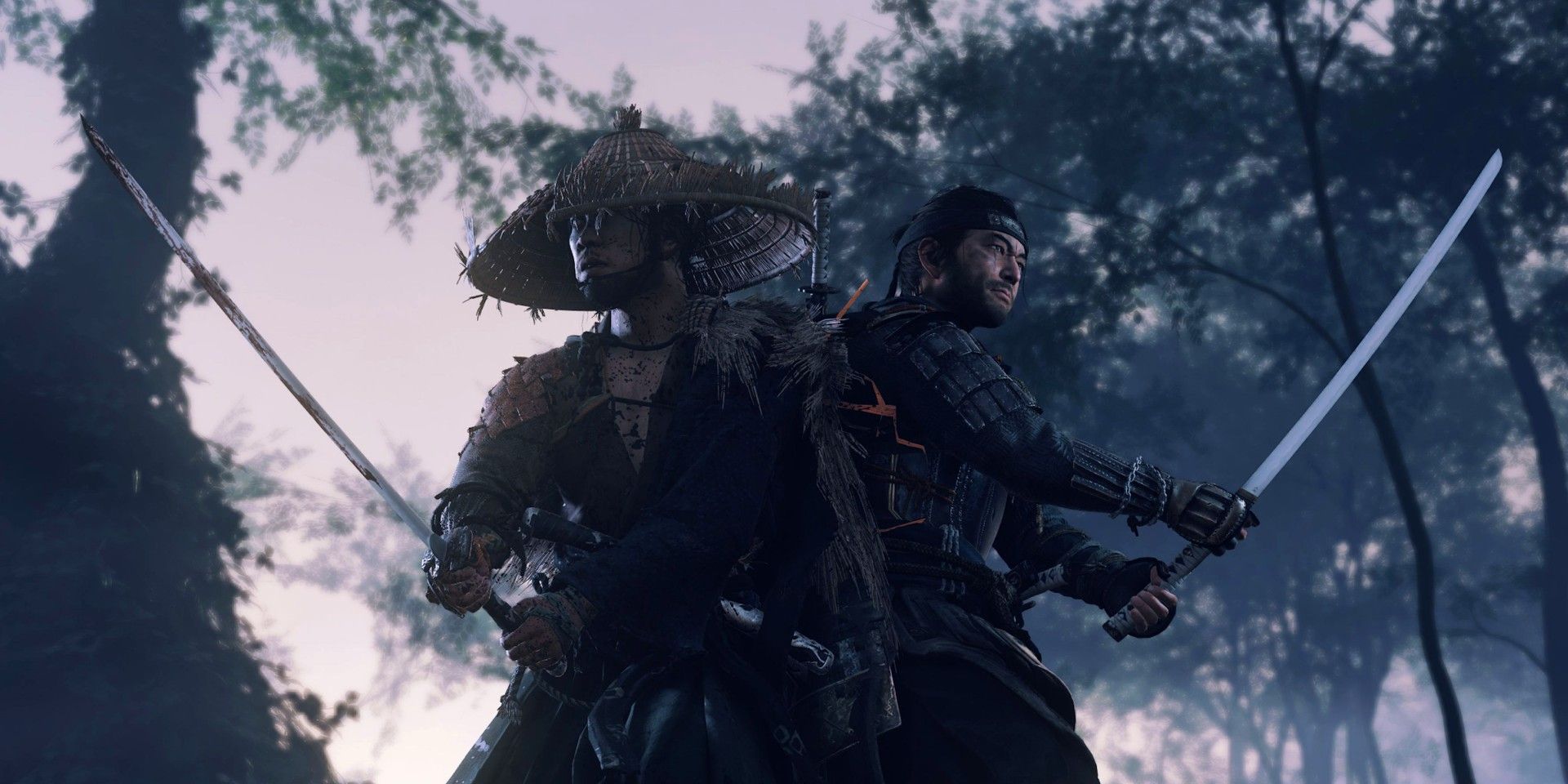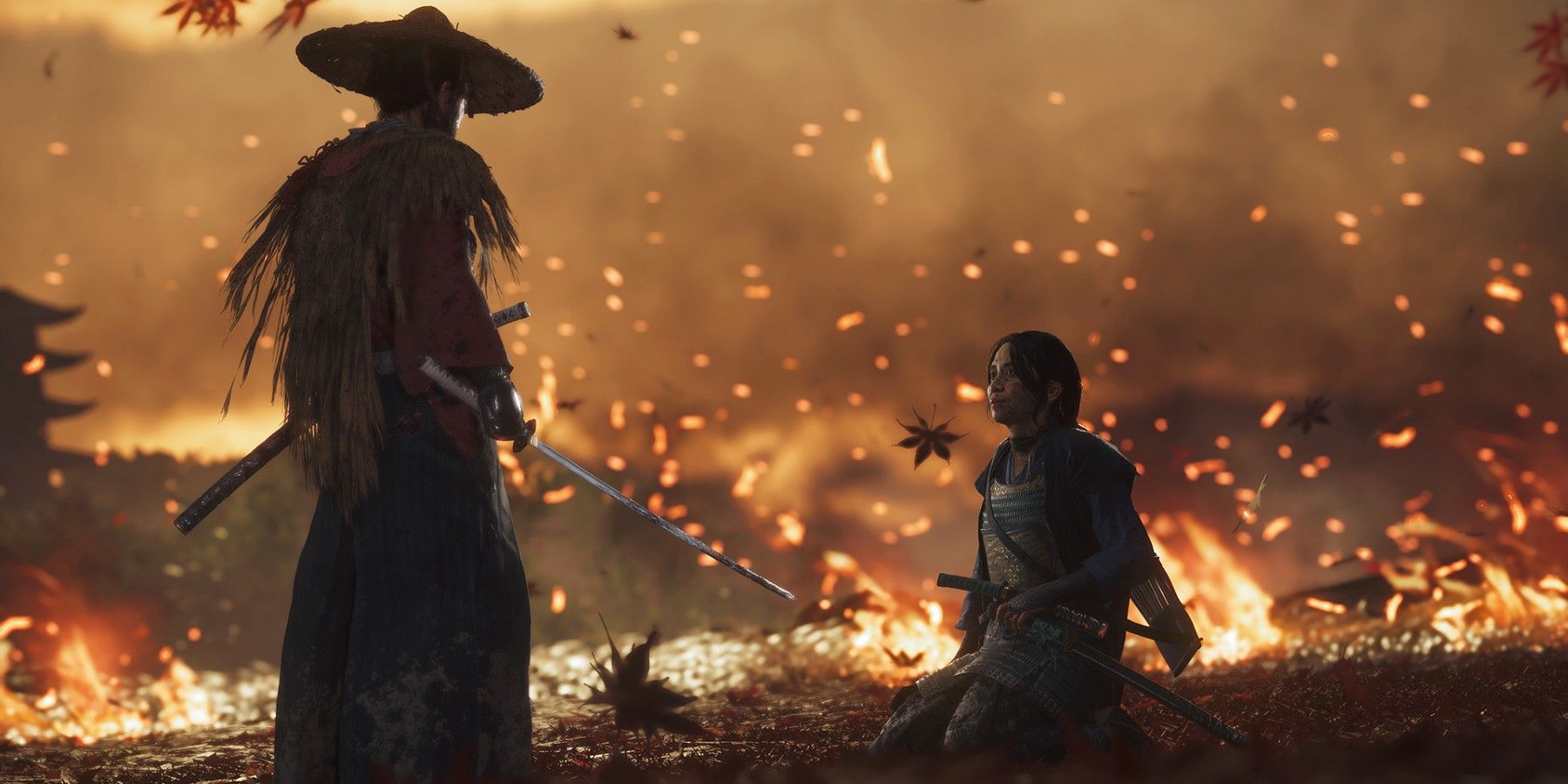Ghost of Tsushima is likely one of the last major PS4 exclusives, as Son shift focus to the impending release of the PS5. It's a wildly different change for Sucker Punch Productions, best known for developing the Sly Cooper and inFamous series. Players take on the role of Jin Sakai, a samurai fighting against the Mongol invasion of the island of Tsushima.
Sucker Punch as taken a lot of inspiration from Japan's Samurai cinema, especially the works of the legendary Akira Kurosawa. This even led to the developers including a Kurosawa Mode that places a black and white film filter over the game.
With all of its Samurai inspirations combat is, of course, a major part of Ghost of Tsushima. Players have very little open to them at the beginning, but Ghost of Tsushima's combat seriously improves the further into the game, and by the end, becomes something special.
Ghost of Tsushima's Combat Has a Real Sense of Progression
At the start of Ghost of Tsushima Jin has nothing but his katana and a very limited set of sword skills at that. He can easily be overwhelmed by more than a few enemies at once, but as players explore more of the island, and help its inhabitants, that changes. By completing missions, taking down enemy strongholds, and fighting Mongols, Jin builds his Legend of the Ghost. Each level gained unlocks a new Ghost tool, like throwing Kunai or smoke bombs. Equally, each step of building Jin's Legend grants players a technique point that can be spent to upgrade his samurai skills, combat stances, and general abilities.
Killing and observing enemy leaders helps Jin get new stances, each of which specializes in taking on specific enemies. Water stance is good against shield enemies, while wind stance is most effective against spearmen. Enemies that gave players huge amounts of trouble before can suddenly be fought on equal footing, and upgrading stances only provides more options. For example, upgrading Water stance gives Jin a quick four strike attack that can instantly kill enemies, while upgrading Earth stance gives him faster strikes. Because practically everything players do contributes to that Legend meter, there's almost always a new skill to be bought or upgraded. There are also various ways to improve Jin's stats scattered throughout the world; hot springs increase his health, Bamboo stands increase his focus, and Inari Shrines unlock more charm slots. Sucker Punch has gone to great lengths to ensure everything players do pays off in some way, and most of it ties directly into combat.
Past the skill trees, there are Mythic Legends, lengthy quests that delve into the lore or history of the island. Three of these quests grant Jin an incredibly powerful new ability. These quests are a big undertaking but the skills granted are more than worth it. There are a lot of choices in Ghost of Tsushima's skill trees, but it lets players pick the approach they want. If they want to be stealthy they can invest in improving the Ghost weapons, or if they want to rush straight in they can improve Jin's samurai skills and forms. This isn't even to mention the wealth of weapon upgrades and armor that Jin can get throughout the game.
At every step of the way Ghost of Tsushima gives players some new toy to use in combat or some improvement for Jin. It does progression better than almost any other open-world title out there, and really gives a sense of Jin, and the player, honing the art of the samurai.
Ghost of Tsushima is currently available on PS4.


